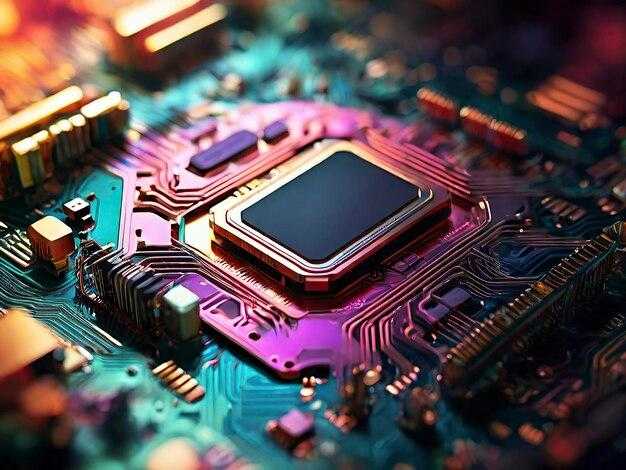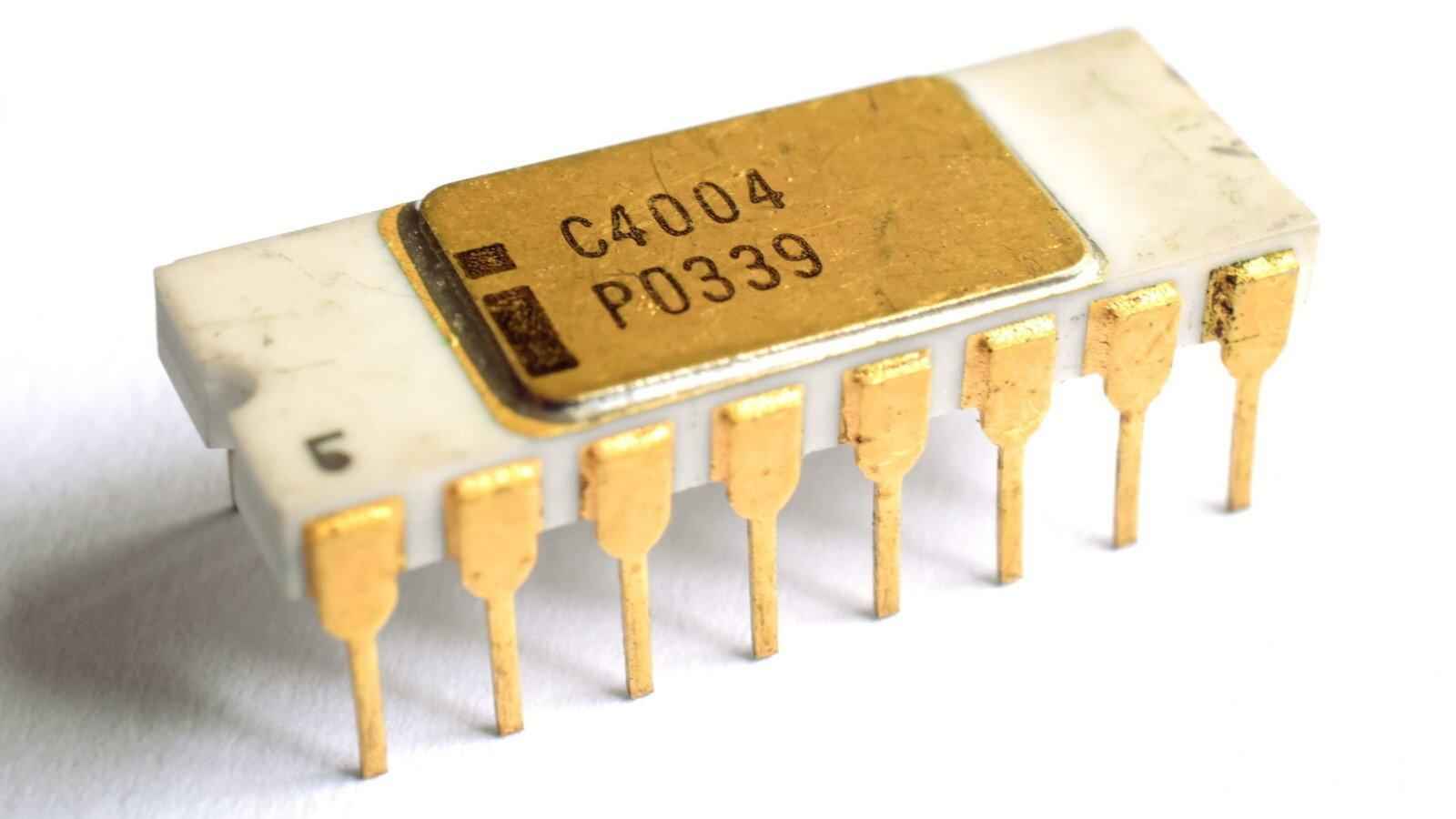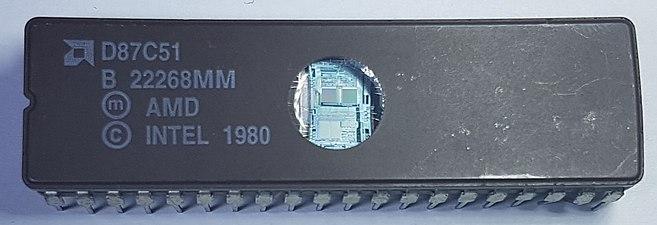The Evolution of Microcontrollers in Electronics You Should Know
The Evolution of Microcontrollers in Electronics You Should Know

Microcontrollers are at the heart of the modern technology. Every electronic and technological product that we are using is powered and run by a microcontroller. From the smallest wearable device to the largest industrial machinery system, all of them are characterized by the presence of microcontrollers. These devices have also accelerated the process of technological evolution. They have made it easier for manufacturers to produce devices that can perform complex functions.
However, do you know that today’s microcontrollers are very different from the first time that they were invented? Just like any technological product, microcontrollers have undergone gradual evolution to their current present form. In this article, we are going to discuss in detail the evolution of microcontrollers. You will understand how they have evolved and also appreciate how far we have come in terms of technology.
Background on the microcontroller systems
To understand the evolution of microcontrollers, it is prudent to have an idea about the development of the most important device that has been relying on microcontrollers for decades. That is a computer.
The first computer (ENIAC) was pretty large and heavy. It occupied up to 85 cubic meters of space and its weight was around 30 tons. It had a special room to accommodate it. This computer had a high heat and power dissipation. This means that the room had a special ventilation system to facilitate fast cooling. It also had large electronic components that were quite mechanical. They suffered constant breakdowns and malfunctions. The computer needed constant maintenance services. Even the mini-computers that were developed at the time were of the size of a closet.
What about the effort and the resources required to manufacture such computers? Well, it was quite immense. There were very few computers in the world and this was mainly because of the amount of resources that was required to produce a single computer.
The development of microcontrollers was boosted by the growth of semiconductor technologies. In 1907, there was some interest in the semiconductor technology. In 1940, diodes and transistors started drawing some interest in the world of electronics. Researchers started realizing the power of these semiconductor components in the world of electronics. In 1959, Robbery Neuss invented an integrated circuit or IC.
Entry of intel in the market
Intel is also credited for making some serious contributions to the early development of microcontrollers. Founded by Robert Noyce, Andrew Grove, and Gordon Moore, the company became a common name in the evolution of microcontrollers. Just after the company was founded, it embarked on the process of building memory devices. The 64-bit Schottky bipolar static RAM became one of the first memory devices that the company introduced to the market.
The 4004 microprocessor became the next product from Intel. This microcontroller was packed with 2300 p/p transistors and was poised to deliver better performance than the ENIAC computer. In terms of size, the 4004 microprocessor was smaller than an average palm.

Image of 4004 microprocessor. Source PCMag
In 1972, Intel released the 8008 processor. This was considered an upgrade of the 4004. The 8008 has some striking similarities with the modern microprocessors. It had a battery, stack pointer, 8 address registers, and also I/O commands.
One year later (1973) the most successful classic microprocessor was invented. This was an 8-bit 8080 microprocessor. Intel was still the biggest name in the microprocessor industry.
Still, in 1973, Intel faced the first serious competition. Motorola made an entry into the industry with the release of the 6800 processor. This processor used n-MOS technology that had a 16-bit address bus and a three-bust structure. It had a powerful interrupt system and, hence needed a high-voltage power source.
The entry of Motorola marked the beginning of a vicious fight with Intel. The fights have lasted for decades. The good thing about these confrontations is they motivated the two companies to be more innovative. This made the industry more vibrant as each company was striving to outdo another in terms of the products that they released to the market.
The introduction of a 16-bit microprocessor pushed the competition to the next level. Intel’s 8086 16-bit microprocessor was used by IBM to make the first personal computers. Well, Motorola responded almost immediately with their “68000” 16-bit processor. This one was used in Apple and Atari computers. The ZX Spectrum computers were quite popular and they were run by the 6800 processors from Motorola.
Micro-computers
The invention of micro-computers marked a major step towards the development of microcontrollers. Micro-computers were widely used for automation and needed to be used beyond offices. To be precise, they were needed in fields to execute various control measures. Since the main tasks of micro-computers included automation and control, the term “microcontroller” was coined. This term replaced the name “single-chip micro-computers”. Take note that microcontrollers are different from microprocessors.
The first patent for microcontrollers was issued in 1971 in the USSR and was given to M Kochren and G. Boone. The patent was from Texas Instruments. The late 1970s marked the beginning of another wave of competition between Motorola and Intel. In 1976, Intel released an i8048 microprocessor. Two years later, Motorola released the mc6801. Four years after releasing the i8048, Intel released the MK 18051 which is still popular to date. This microprocessor has undergone some tweaking and modification. At the time of release, it had up to 128,000 transistors. This was four times more than its previous release.

Image source Wikipedia
Up to 2017, there were these types of microcontrollers dominated the market.
· 8-bit PIC microcontrollers from Microchip Technology
· 16-bit TI MSP430
· 32-bit microcontrollers
Other parts of the world were not left behind in the race for the microcontroller market. Scientists in the Soviet Union also did their best to catch up with the technological developments regarding microcontrollers. By 1979 the Research Institute of TT developed K1801BE1. This was a microarchitecture that had 16 bits.
Differentiating microcontrollers
There are two main criteria for classifying microcontrollers. These are capacity and architecture.
When it comes to capacity, microcontrollers are categorized based on the volume of data that they can process and control at any given time. This data is measured in bit depth which is the length of one word that is processed by a processor or a controller. It is always assumed that microcontrollers are capable of handling and processing large data volumes. However, this will always depend on various factors that determine the technical specifications of a microcontroller. However, for complex applications, choosing microcontrollers with large processing capacity is always advisable. Low-capacity microcontrollers are suitable for simple devices and applications.
What is the relationship between the cost of IC and the capacity? For years, it has always been the higher the cost, the larger the capacity of a microcontroller. However, this notion has been continuously toned down in recent years due to reducing the cost of semiconductor components that make up the microcontrollers.
As we have mentioned, microcontrollers are also classified based on their architectures. The most common architectures that have been in the market over the years include:
· RISC Architecture: Also known as an abbreviated command system, the architecture is designed for rapid executions of commands in less than two machine cycles. These microcontrollers tend to have a high number of universal registers hence providing a longer pathway for accessing a permanent memory system.
· CISC architecture: Also known as a complete system of instructions, there is a close working relationship between the commands and the memory system. A single instruction is executed in between one to four machine cycles. Most intel microcontrollers belong to this category.
· Von Neumann Architecture: Microcontrollers with this architecture tend to have a common memory area for both commands and data. Designed in 1945, architecture limits the simultaneous transfer and fetching of data.
· Harvard architecture: Designed in 1944 this architecture for microcontrollers featured separate data memory and program memory modules. It was mainly used in the first generation of the Mark computers.
Expanded market
The microcontroller market has also grown significantly from all ends. More manufacturers entered into the game such that it was no longer an affair between Intel and Motorola. Access to information and technology are among the reasons for this. Also, the demand for technological products has increased the demand for microcontrollers. This is another reason why the market has expanded significantly.
Multiple uses
Over the years, manufacturers resorted to building microcontrollers that can be used for different purposes. In other words, they adopted the policy of one device-many uses. This means that users would have a device that would execute multiple tasks at ago. While this may sound overwhelming, manufacturers put various mechanisms to take care of this problem. For instance, they have advanced thermal management mechanisms to minimize cases of overheating as the device has been overworked.
Microcontrollers now
So, what is the current state of the microcontroller ecosystem? After getting deep into the mast of the microcontrollers and how they have evolved, it is prudent to know where we are now. While we are at the pinnacle of the technological evolution, there is no limit. However, we have to appreciate the fact that modern microcontrollers are several miles ahead of where they were a few years ago. Also, the fact that technology is advancing at a fast rate means that evolution is also taking place at a faster rate.
One area that has greatly evolved is the processing power. There is no denying that the current microcontrollers are powerful. Their processing powers are higher than it was a few years ago, and they keep improving. This is mainly because of the advancements in the semiconductor components that make up the microcontrollers. Increased component density is one of the key factors that have contributed to better performance of microcontrollers.
Power consumption is another area that has been positively impacted by the evolution of microcontrollers. As we have seen, the older generations of microcontrollers tend to have high power consumption rates. This has been changing over the years. The latest models of microcontrollers tend to consume less energy. Some even come with power management features that allow you to regulate the power consumption depending on the operation. With better power management, it has become easier to incorporate microcontrollers in various application areas.
In all the phases of evolution that we have discussed, size has always been a major factor. Microcontrollers have been getting smaller and lighter throughout their evolution. Even with the reduction of their sizes, they have still been able to deliver better performance.
Cost reduction is another key element that we have pointed out in the evolution of microcontrollers. The prices have been coming down over the years. Lower prices have also affected the overall costs of products that depend on the microcontrollers. Additionally, more players have been motivated to get into the electronic industry thanks to the lower costs of microcontrollers.
Conclusion
Now that you have an idea of the evolution of microcontrollers, what next? With this information, you can appreciate how far we have come in terms of the microcontroller technology. You will also be able to appreciate where we are and have an idea of where we are heading about the microcontroller technology. If you are in an industry that entails building electronic components, knowledge of the evolution of microcontrollers can come in handy in helping you make the right purchasing decision. For instance, you will be able to tell different generations of microcontrollers and choose one that is suitable for your project.
Furthermore, if you are in the business of electronics, the information will also help you to choose the right supplier based on the generations of microcontrollers that they have in stock. A reputable microcontroller supplier must be stocking different generations of microcontrollers. This will make it easy for you to choose any generation that is perfect for your business. At Rantle East Electronic, we have access to all popular generations of microcontrollers. Talk to us and we will choose one that is ideal for you.
Kevin Chen
Founder / Writer at Rantle East Electronic Trading Co.,Limited
I am Kevin Chen, I graduated from University of Electronic Science and Technology of China in 2000. I am an electrical and electronic engineer with 23 years of experience, in charge of writting content for ICRFQ. I am willing use my experiences to create reliable and necessary electronic information to help our readers. We welcome readers to engage with us on various topics related to electronics such as IC chips, Diode, Transistor, Module, Relay, opticalcoupler, Connectors etc. Please feel free to share your thoughts and questions on these subjects with us. We look forward to hearing from you!







 Start With
Start With Include With
Include With


